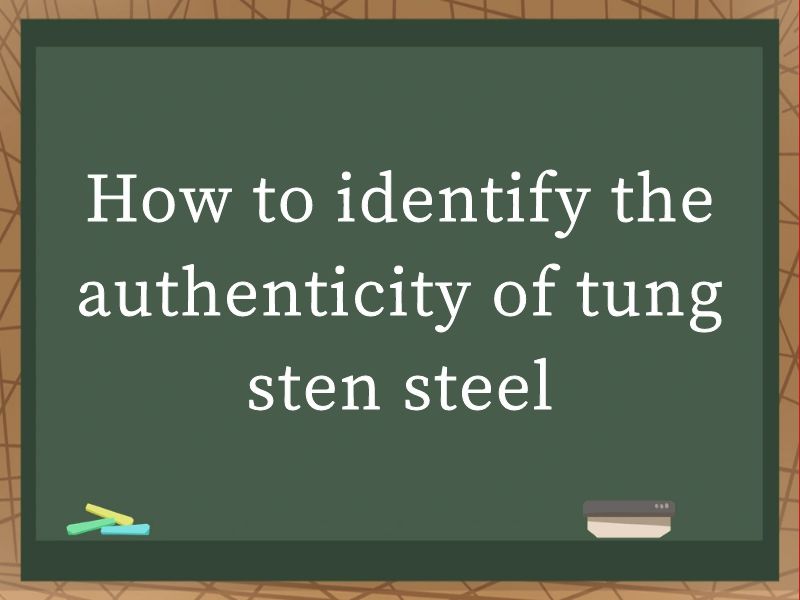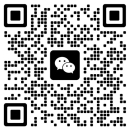JOURNALISM
- NEWS -
|
How to identify the authenticity of tungsten steelHow to identify the authenticity of tungsten steel.Tungsten steel, known for its exceptional hardness, wear resistance, and corrosion resistance, has found widespread applications in various industries, including tooling, jewelry, and medical implants. However, due to its high value and unique properties, tungsten steel is also prone to imitation and forgery. Identifying the authenticity of tungsten steel is crucial to ensure the quality, safety, and performance of products. This article delves into various methods to authenticate tungsten steel, providing insights that can help consumers, manufacturers, and professionals make informed decisions.
Understanding Tungsten Steel's Properties Before discussing identification methods, it is essential to understand the fundamental properties of tungsten steel. Tungsten steel, also known as high-speed steel or tungsten carbide, is a type of alloy composed primarily of tungsten, carbon, cobalt, and other elements. It is renowned for its hardness, which exceeds that of conventional steel, making it ideal for cutting tools and wear-resistant components. Additionally, tungsten steel exhibits excellent thermal stability, allowing it to maintain its hardness at high temperatures. These properties set tungsten steel apart from other materials and serve as the basis for its authenticity testing. Visual Inspection One of the simplest methods to assess the authenticity of tungsten steel is through visual inspection. Authentic tungsten steel typically has a dark grey to metallic silver appearance, with a slight shine. It is dense and feels heavy in hand due to its high density. Counterfeit tungsten steel may have a duller finish, or an uneven coloration that suggests impurities or inferior alloy composition. Moreover, checking for manufacturing marks and certifications can provide additional clues. Reputable manufacturers often include branding, serial numbers, or quality marks on their products. While these can be forged, their presence should raise flags if accompanied by other suspicious features. Density Testing Density is a critical physical property of tungsten steel. Authentic tungsten steel has a density of approximately 14-15 grams per cubic centimeter (g/cm³), significantly higher than other metals commonly used in forgeries, such as stainless steel (approximately 8 g/cm³) or brass (approximately 8.5 g/cm³). To perform a density test, you can use a simple scale and a known volume of water. Weigh the tungsten steel sample and then submerge it in water to measure the displaced volume. The ratio of the weight to the displaced volume will give you the density. While this method is not foolproof, as sophisticated forgeries may attempt to match the density, it remains a useful preliminary check. Spark Testing Spark testing involves striking the tungsten steel sample with a grindstone or similar abrasive tool and observing the resulting sparks. Tungsten steel produces distinctive, bright, and long-lasting sparks due to its high carbon content and alloy composition. The sparks typically have a forking pattern and may have a bluish hue. While spark testing can provide valuable insights, it requires some experience and training to accurately interpret the results. Different alloys can produce similar sparks, and environmental factors like humidity and air pressure can affect spark appearance. Therefore, it is best used as a supplementary method in conjunction with other tests. Magnetic Susceptibility Tungsten steel is weakly magnetic or non-magnetic, depending on its alloy composition. This property can be used to distinguish it from other metals commonly used in forgeries, such as iron or nickel-based alloys, which are more magnetic. Using a strong magnet, test the tungsten steel sample for magnetic attraction. If the sample is strongly attracted to the magnet, it is likely not authentic tungsten steel. However, note that some tungsten steel alloys may exhibit slight magnetic properties due to the presence of cobalt or other ferromagnetic elements. Therefore, magnetic susceptibility should be considered alongside other tests. Hardness Testing Hardness is a defining characteristic of tungsten steel. Authentic tungsten steel has a hardness rating of 60-68 on the Rockwell C scale (HRC), making it one of the hardest metals available. This hardness is achieved through a combination of tungsten carbide particles embedded in a cobalt matrix, creating a wear-resistant composite. To test hardness, you can use a hardness tester, such as a Rockwell or Brinell tester. Apply the tester to the tungsten steel sample according to the manufacturer's instructions and note the hardness reading. If the reading falls outside the expected range for tungsten steel, the sample is likely not authentic. Hardness testing is a reliable method but requires specialized equipment and training. It is also destructive, meaning the tested area may be damaged or altered. Therefore, it is often used as a final verification step after other non-destructive tests have been conducted. Chemical Analysis Chemical analysis is the most definitive method to authenticate tungsten steel. It involves extracting a small sample of the material and analyzing its composition using techniques such as X-ray fluorescence (XRF), inductively coupled plasma mass spectrometry (ICP-MS), or energy-dispersive X-ray spectroscopy (EDS). These techniques can accurately determine the elemental composition of the tungsten steel sample, including the percentages of tungsten, carbon, cobalt, and other alloying elements. By comparing the results to known compositions of authentic tungsten steel, you can conclusively identify forgeries. Chemical analysis is highly accurate but also the most expensive and time-consuming method. It requires specialized laboratories and equipment, making it less practical for routine testing. However, it remains the gold standard for authenticity verification in critical applications, such as aerospace, medical implants, and high-precision tooling. Thermal Conductivity Testing Tungsten steel has a relatively high thermal conductivity, allowing it to efficiently transfer heat. This property can be used to distinguish it from other metals with lower thermal conductivity. To test thermal conductivity, apply a heat source to the tungsten steel sample and measure the temperature change over time using a thermocouple or infrared thermometer. Compare the results to known thermal conductivity values for tungsten steel. While this method is not as definitive as chemical analysis, it can provide useful insights, especially when combined with other tests. Sound Testing Authentic tungsten steel produces a distinctive metallic "ring" when struck with a hammer or other hard object. This characteristic sound is due to the material's high density and stiffness, which results in rapid energy transfer and vibration damping. While sound testing is subjective and requires experience to accurately interpret, it can be a useful tool in preliminary screenings. Compare the sound of the tungsten steel sample to known authentic samples under similar conditions. If the sound is dull or muted, it may indicate a forgery. Conclusion Without Using Typical Conclusion Words Identifying the authenticity of tungsten steel requires a combination of visual inspection, physical testing, and chemical analysis. Each method has its strengths and limitations, and using them in concert provides the most reliable results. By understanding the fundamental properties of tungsten steel and applying appropriate testing techniques, consumers, manufacturers, and professionals can ensure the quality, safety, and performance of products made from this valuable material. Remember, while forgeries may become increasingly sophisticated, the principles of material science and the rigorous application of testing remain effective safeguards against deceit. |


